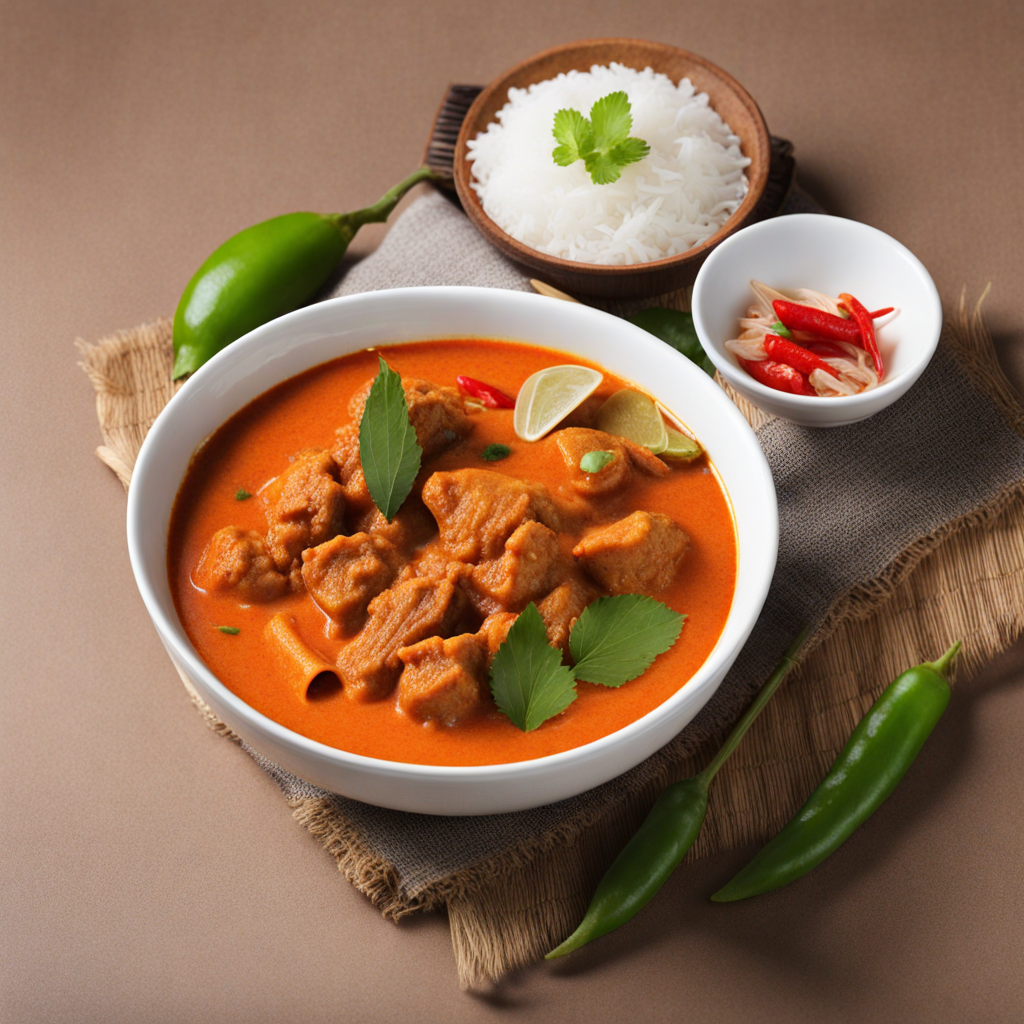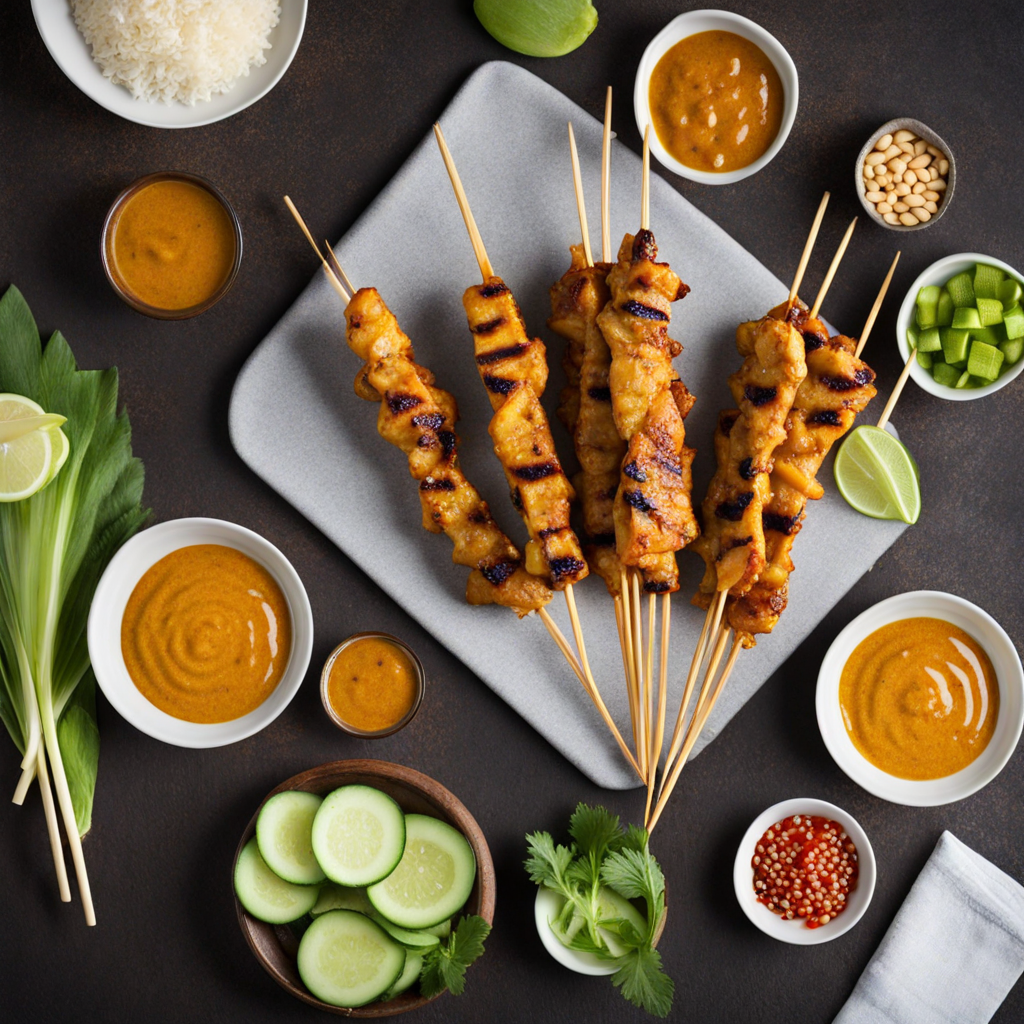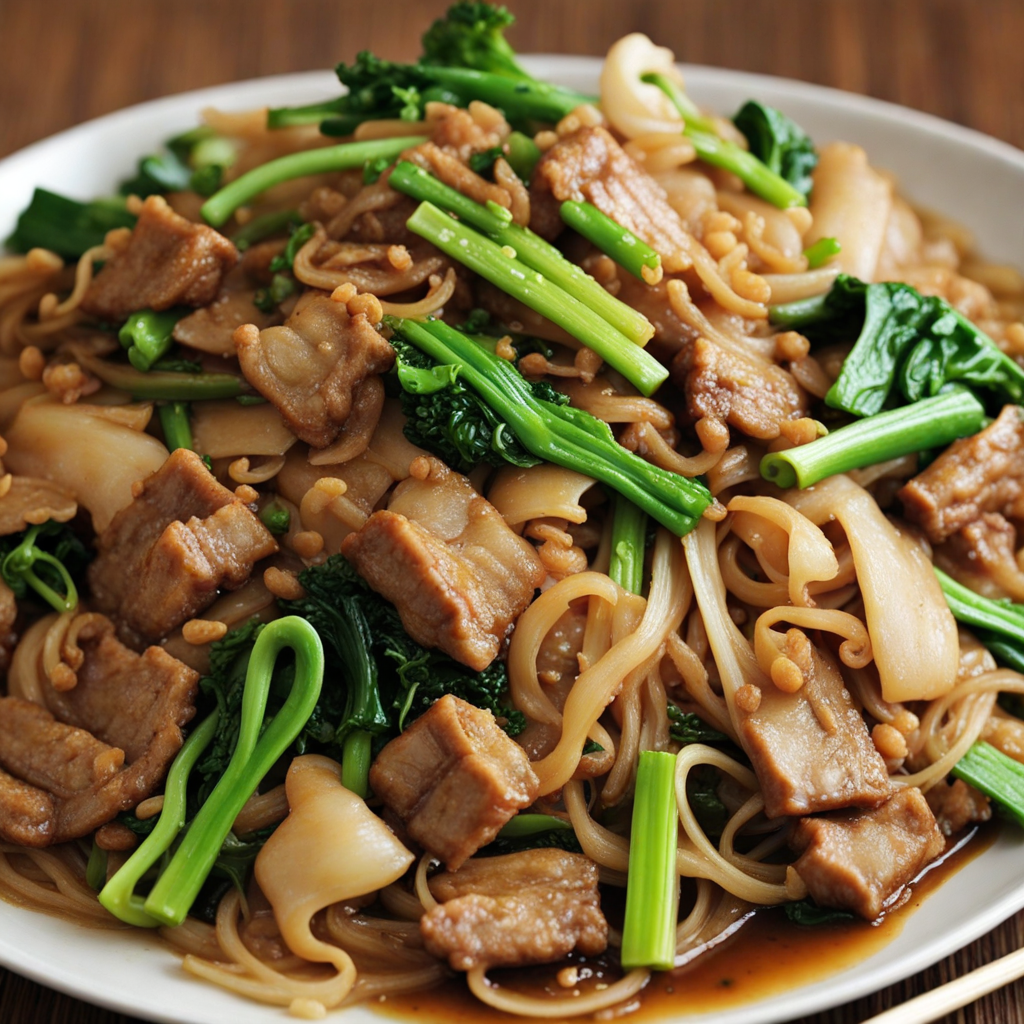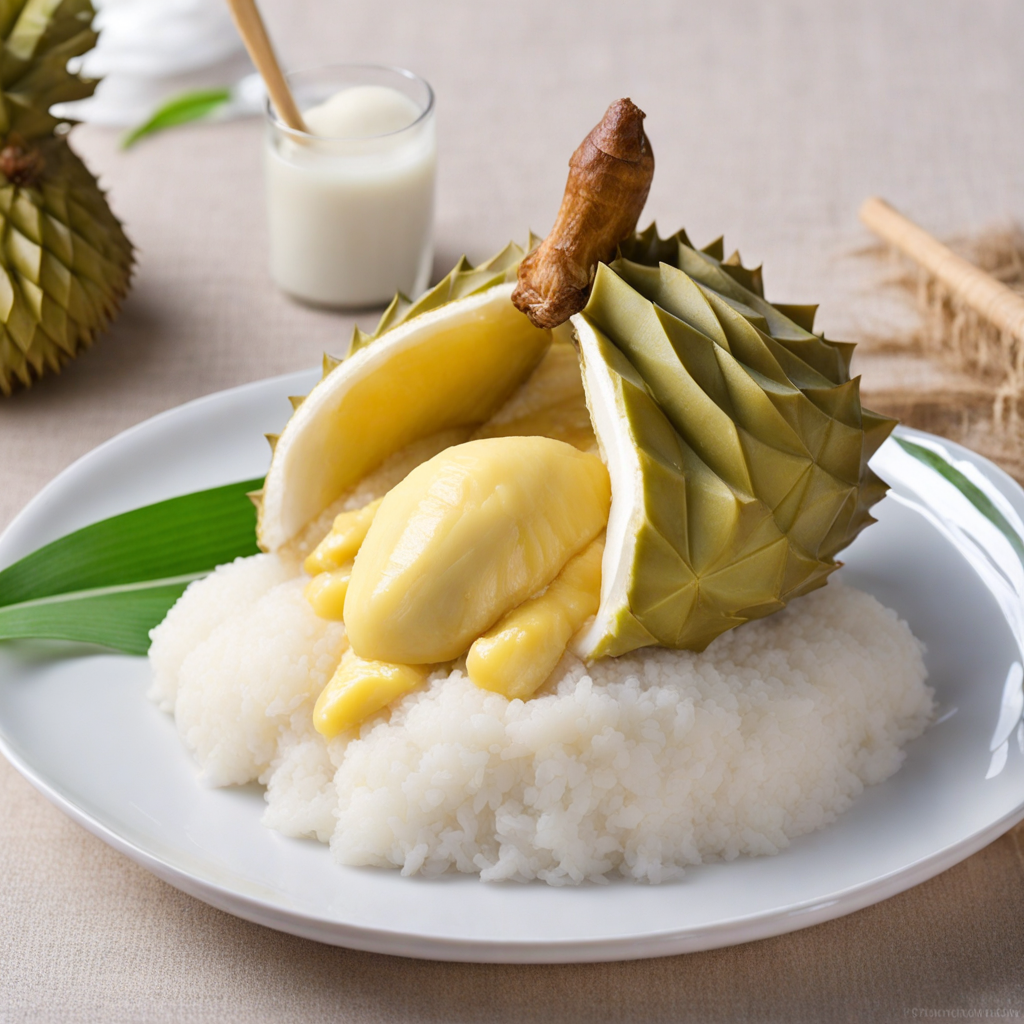Red Curry
Red Curry, or "Gaeng Phed," is a vibrant and aromatic dish that embodies the essence of Thai cuisine. This dish is characterized by its rich red color, which comes from red curry paste made from a blend of ingredients such as red chili peppers, garlic, lemongrass, galangal, and shrimp paste. The paste is cooked in coconut milk, which creates a creamy and luscious base that perfectly balances the heat of the chilies with the sweetness of the coconut. The result is a harmonious flavor profile that is both spicy and subtly sweet, inviting adventurous eaters to indulge in its depths. Typically, Red Curry features a variety of proteins, including chicken, beef, pork, or tofu, which soak up the fragrant sauce, enhancing the overall flavor. Vegetables such as bell peppers, bamboo shoots, and Thai eggplants are commonly added, providing a delightful crunch and a burst of freshness. The dish is often garnished with fresh basil leaves, which add an aromatic touch and a hint of herbal brightness, making every bite a delightful experience. Served with steamed jasmine rice or sticky rice, Red Curry is not just a meal but an experience that transports you straight to the heart of Thailand. The combination of spices, creamy coconut, and tender proteins creates a satisfying dish that is both comforting and invigorating. Whether you're a seasoned fan of Thai food or a newcomer eager to explore, Red Curry offers a unique taste journey that captures the vibrant spirit of Thai culinary traditions.
How It Became This Dish
The Spicy Journey of 'แกงเผ็ด' (Kaeng Phed) in Thai Cuisine Origins and Early History Kaeng Phed, or “red curry,” is a vibrant and aromatic dish that epitomizes the essence of Thai cuisine. Its origins can be traced back to the rich tapestry of Southeast Asian culinary traditions, where spices, herbs, and chili peppers play a pivotal role. The word "kaeng" translates to "curry" in Thai, and "phed" means "spicy" or "hot," aptly describing its most defining characteristics. The introduction of chili to Thailand is believed to have occurred in the 16th century when Portuguese traders brought the fiery fruit from the Americas. This transformative ingredient quickly became integral to Thai cooking, altering the flavor profiles of many traditional dishes. Prior to this introduction, Thai curries were primarily based on a blend of fresh herbs, coconut milk, and other local ingredients, including turmeric, which provided a golden hue but lacked the heat associated with modern curries. Cultural Significance Kaeng Phed is more than just a dish; it embodies the cultural identity of Thailand. The preparation of this curry is often a communal activity, bringing families together in the kitchen. It embodies the Thai philosophy of harmony, balancing the five fundamental tastes: sweet, sour, salty, bitter, and spicy. This balance is crucial in Thai cuisine, and kaeng phed exemplifies it beautifully. In Thai culture, food is deeply intertwined with social gatherings, celebrations, and rituals. Kaeng Phed is often served during festive occasions, family gatherings, and religious ceremonies, symbolizing prosperity and abundance. It is not uncommon to see variations of this curry at weddings and festivals, where it is prepared with different proteins, ranging from chicken and beef to seafood and tofu, to accommodate various dietary preferences. Ingredients and Preparation The heart of kaeng phed lies in its rich and fragrant coconut milk base, which is complemented by a medley of spices and herbs. The essential elements include red curry paste (nam prik kaeng phed), which is made from dried red chili peppers, garlic, shallots, lemongrass, galangal, and shrimp paste. This paste is the soul of the dish, providing the heat and depth of flavor that kaeng phed is known for. The preparation of kaeng phed begins with frying the curry paste in a bit of coconut cream to release its essential oils and enhance its aroma. This step is crucial, as it helps to develop the complexity of flavors. Once the paste is fragrant, coconut milk is added, along with the chosen protein and vegetables. Common additions include bamboo shoots, eggplant, and Thai basil, which contribute to the dish's vibrant color and texture. As the curry simmers, the flavors meld together, creating a dish that is at once comforting and invigorating. The final touches, such as fresh herbs and lime juice, elevate the dish, adding brightness and freshness. This meticulous process reflects the Thai culinary philosophy of using fresh, high-quality ingredients to create dishes that are not only delicious but also visually appealing. Evolution Over Time While kaeng phed has its roots in traditional Thai cooking, it has evolved over time, influenced by regional variations and globalization. Different regions of Thailand have their unique interpretations of kaeng phed, with variations in spice levels, ingredients, and preparation methods. For example, in the northern regions, kaeng phed may incorporate more herbs and less coconut milk, resulting in a lighter and herbaceous flavor profile. The rise of Thai cuisine on the global stage has also led to adaptations of kaeng phed in international contexts. In Western countries, where access to authentic Thai ingredients may be limited, chefs often modify traditional recipes, substituting local ingredients while attempting to maintain the essence of the dish. This has resulted in a broader appreciation for Thai flavors and has introduced kaeng phed to new audiences. In recent years, there has been a growing awareness of health and sustainability among consumers. This shift has prompted chefs and home cooks alike to experiment with plant-based proteins and organic ingredients in traditional recipes. Variants of kaeng phed made with tofu or jackfruit have gained popularity, allowing those with dietary restrictions or preferences to enjoy this beloved dish without compromising on flavor. Kaeng Phed in Modern Thai Cuisine In contemporary Thai dining, kaeng phed remains a staple, celebrated for its versatility and rich flavors. It is commonly found in restaurants ranging from street vendors to upscale dining establishments, each presenting their unique take on the classic dish. Chefs are increasingly experimenting with fusion flavors, incorporating elements from other culinary traditions while maintaining the integrity of the original recipe. Moreover, the global popularity of Thai cuisine has sparked interest in cooking classes and culinary tourism, where visitors to Thailand seek to learn the art of crafting authentic kaeng phed. These experiences offer a deeper understanding of the cultural significance behind the dish, as participants engage with local chefs and learn about the sourcing of ingredients, cooking techniques, and the stories that shape Thai culinary traditions. Conclusion Kaeng Phed is more than just a dish; it represents the heart and soul of Thai cuisine, reflecting the country’s rich history and cultural identity. From its humble beginnings to its evolution in modern gastronomy, kaeng phed has retained its significance as a symbol of togetherness, celebration, and the balance of flavors that define Thai cooking. As it continues to adapt and thrive in culinary scenes around the world, this spicy red curry remains a testament to the enduring legacy of Thai food and its ability to connect people through the shared joy of cooking and sharing meals. Whether enjoyed in a bustling street market or a fine dining restaurant, kaeng phed invites all to partake in the vibrant flavors of Thailand, making it a beloved dish for generations to come.
You may like
Discover local flavors from Thailand







